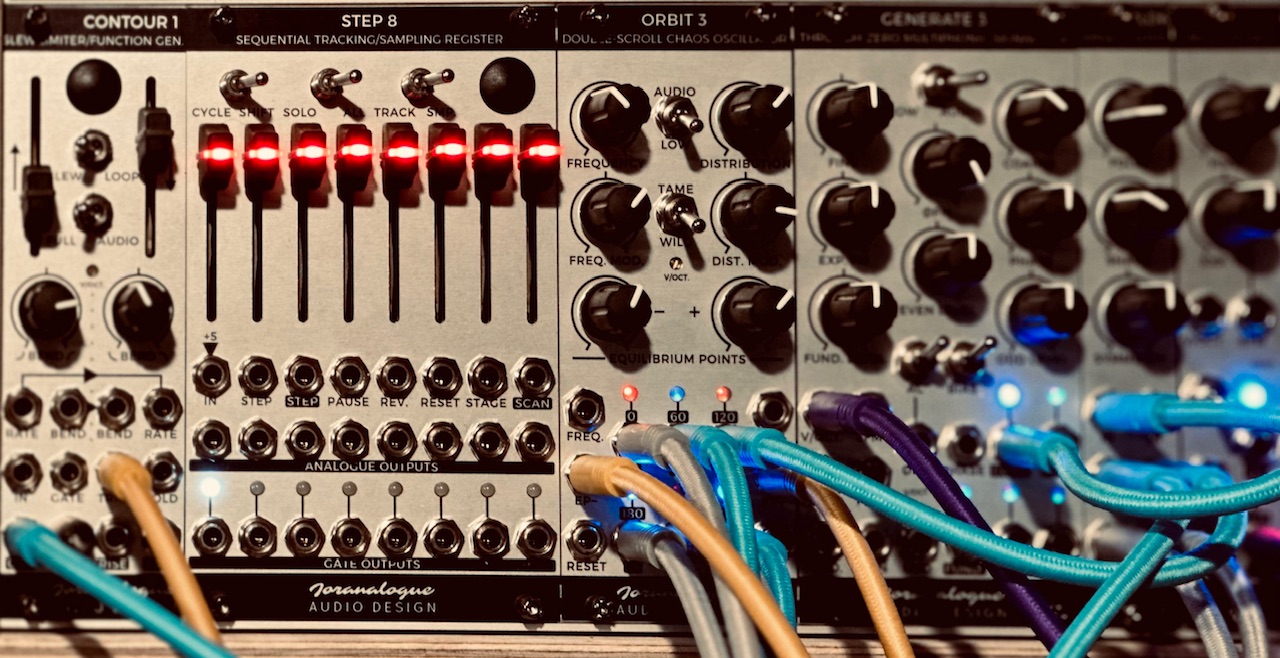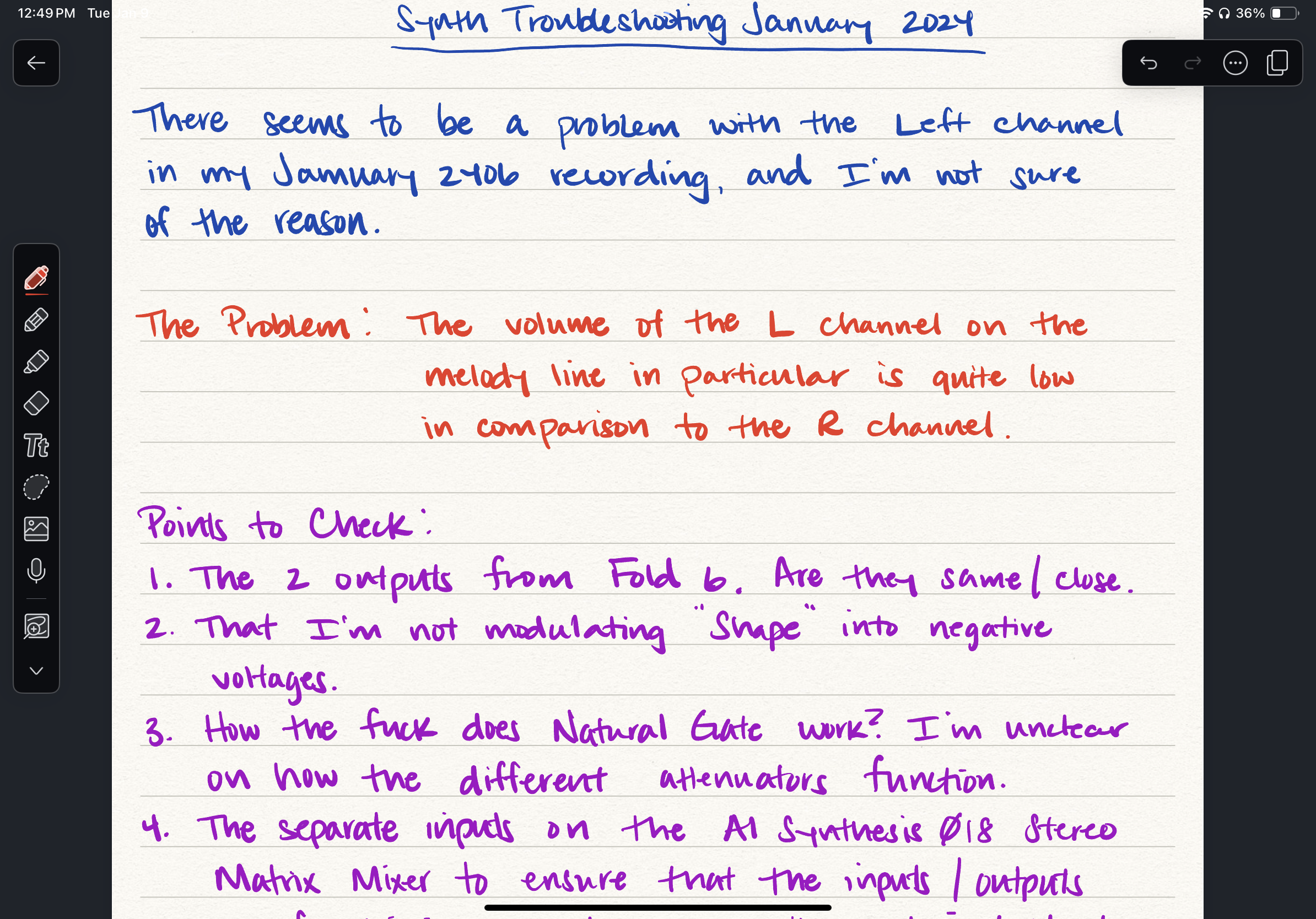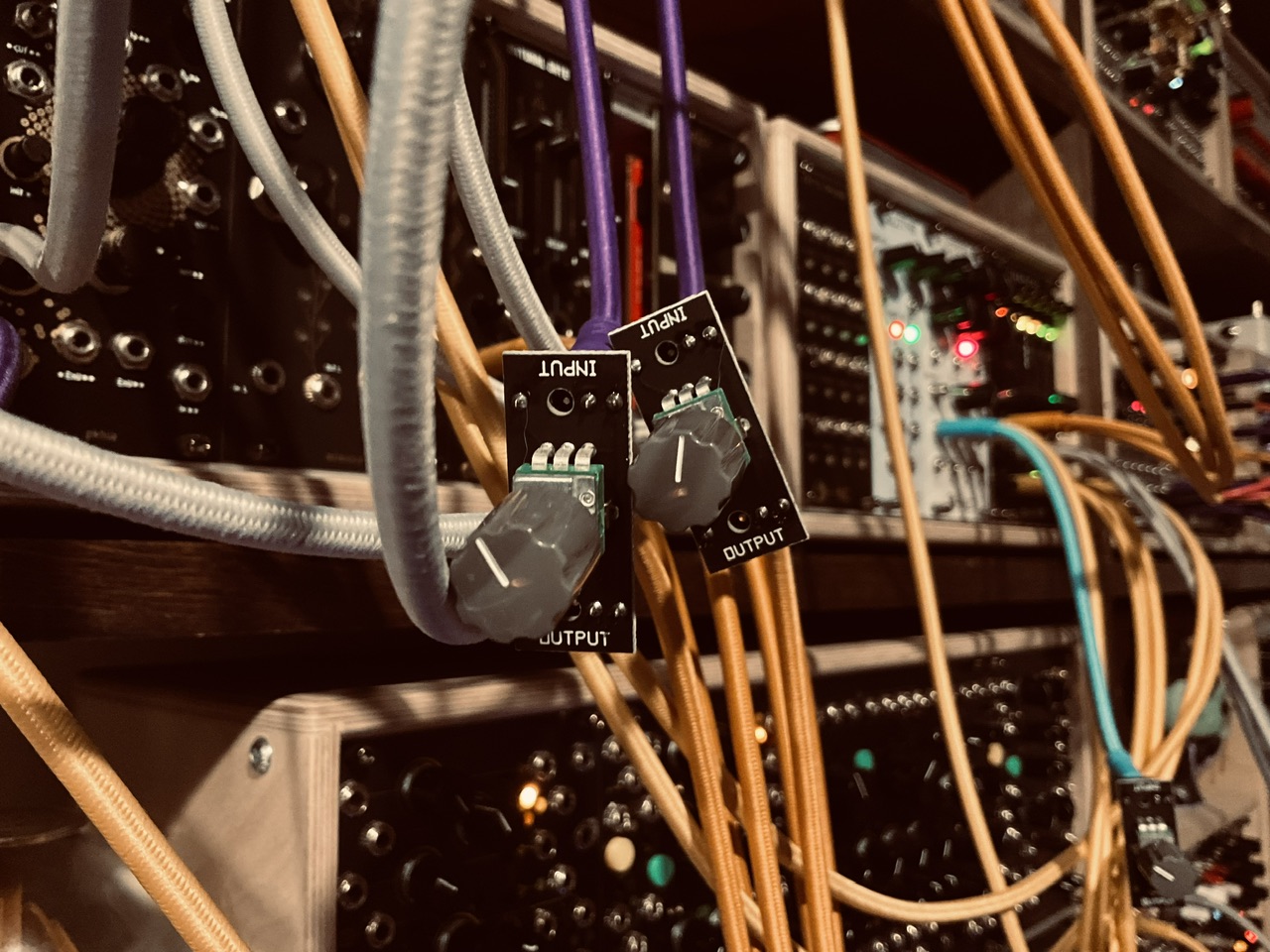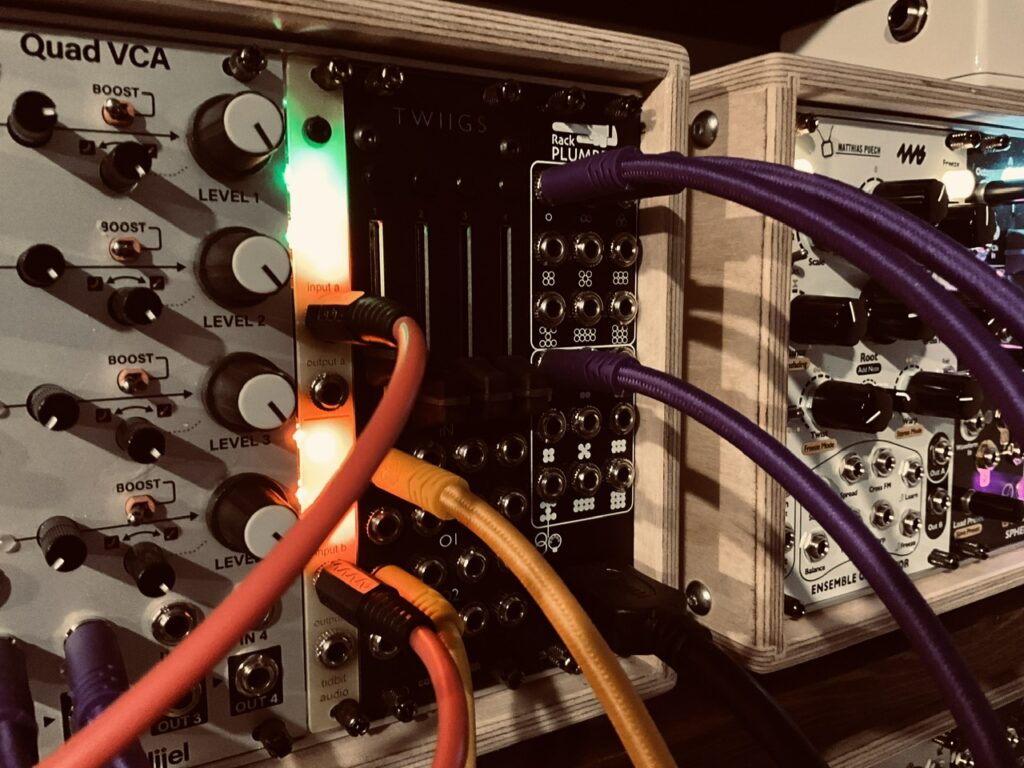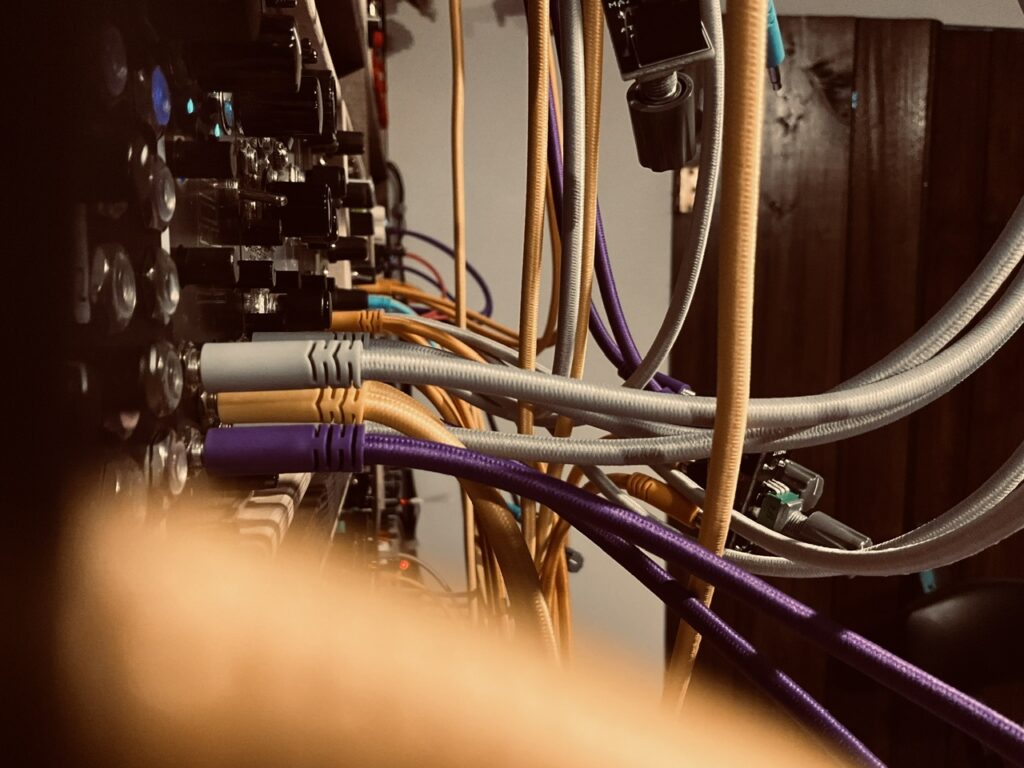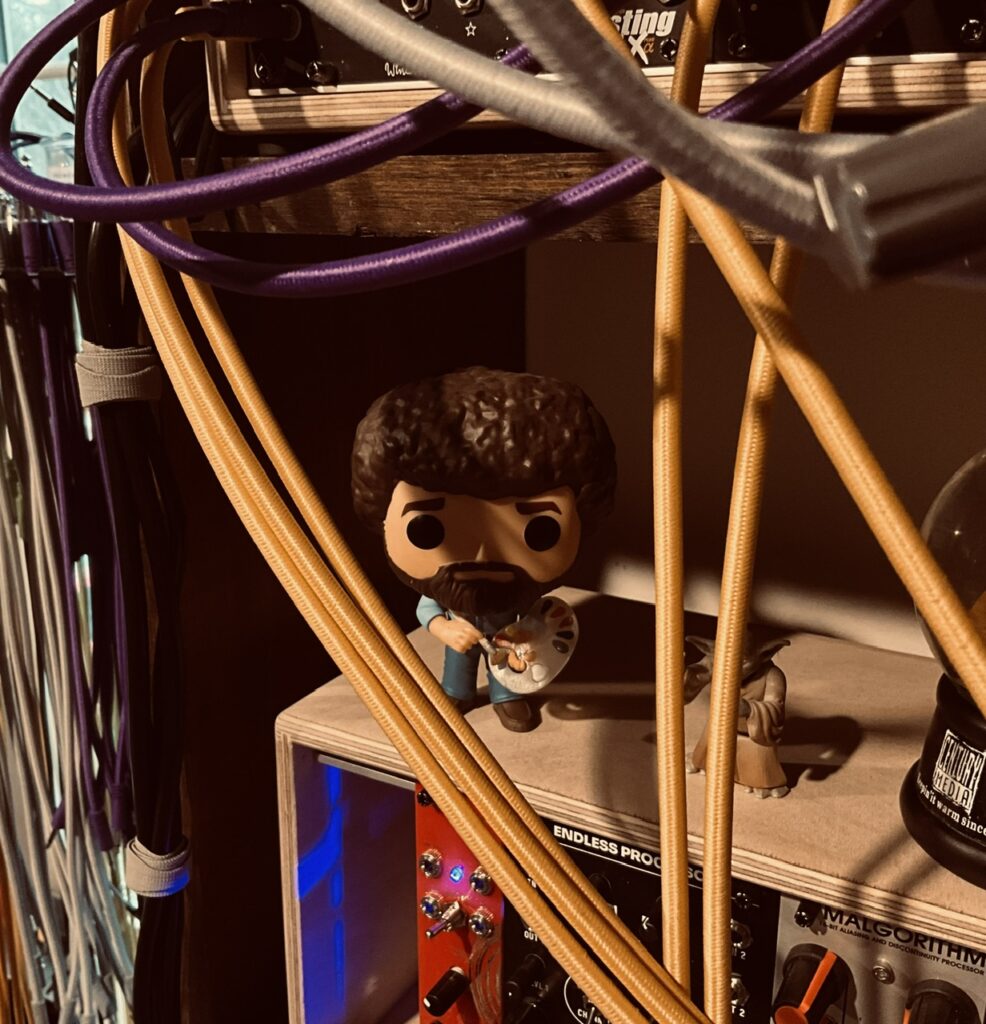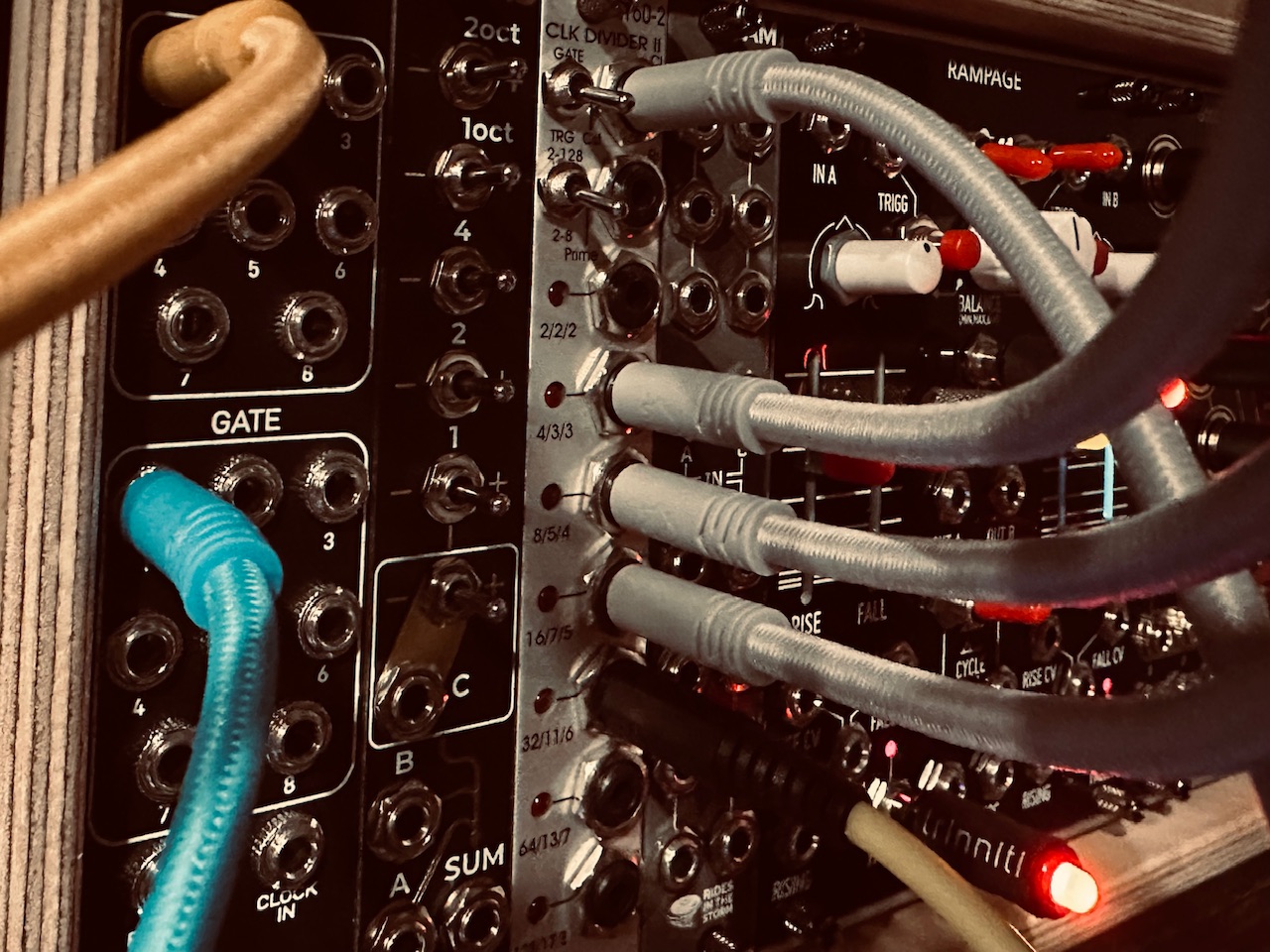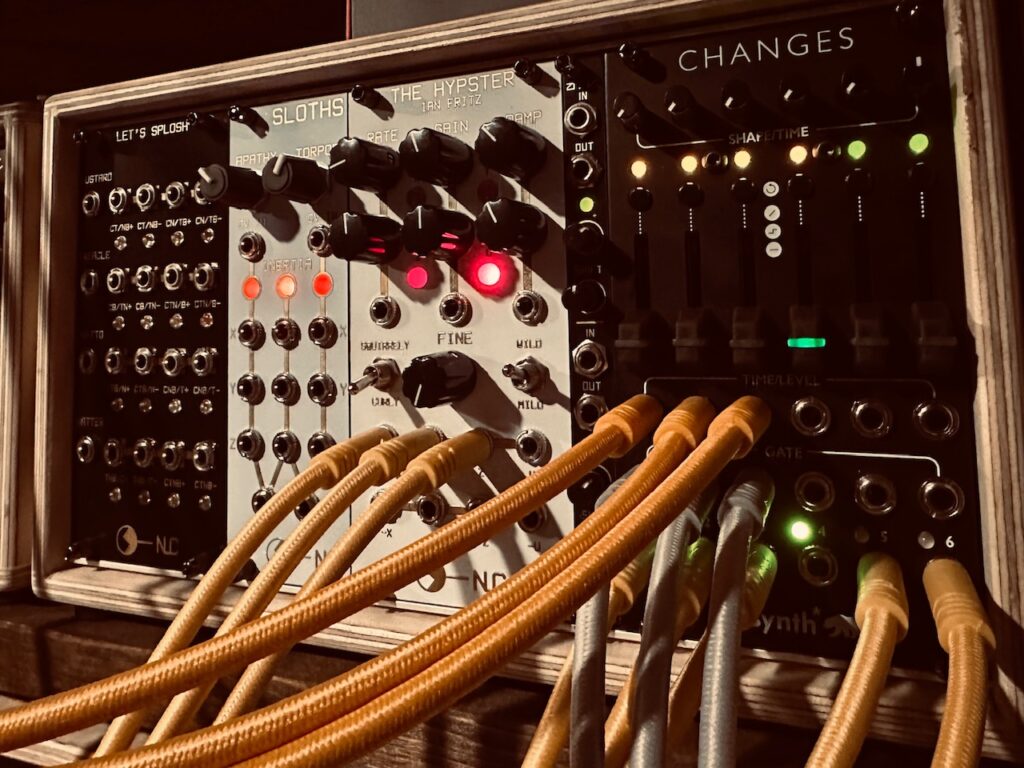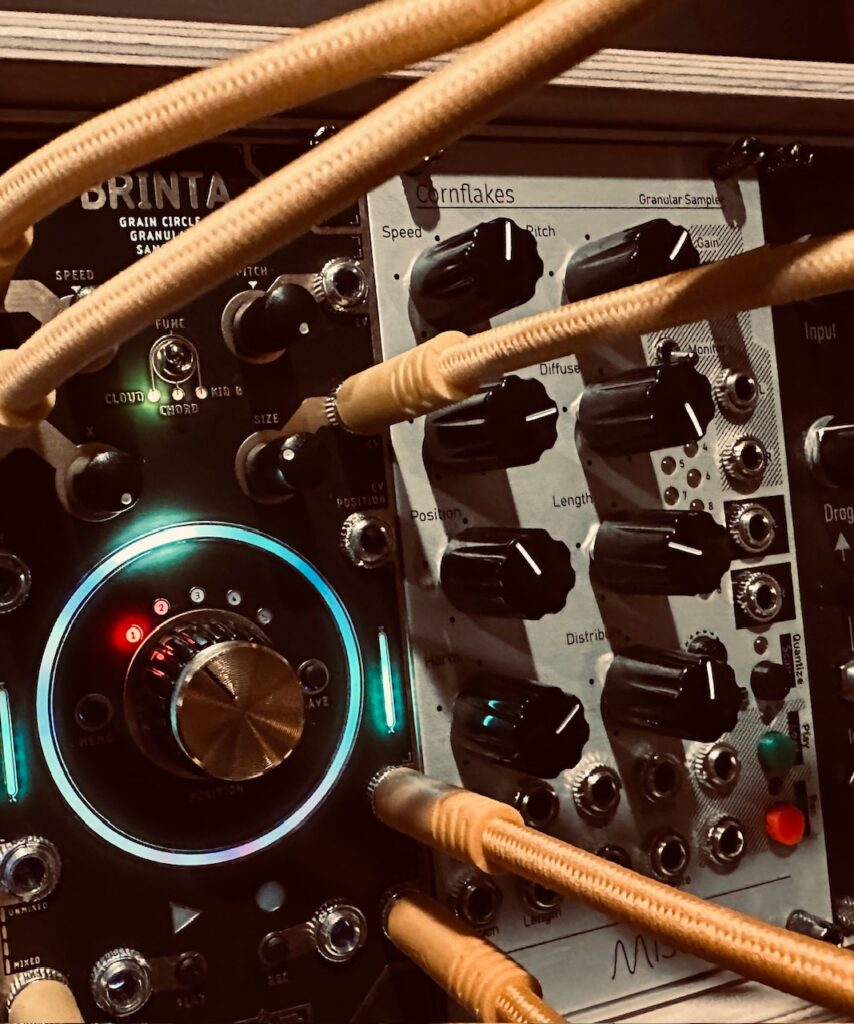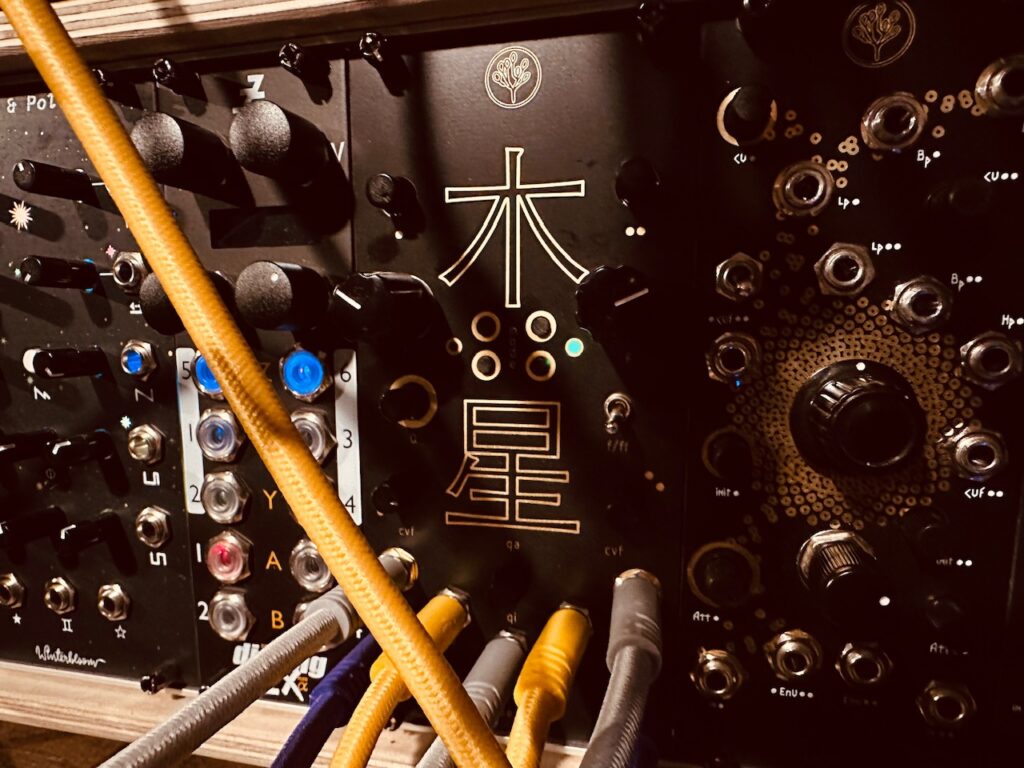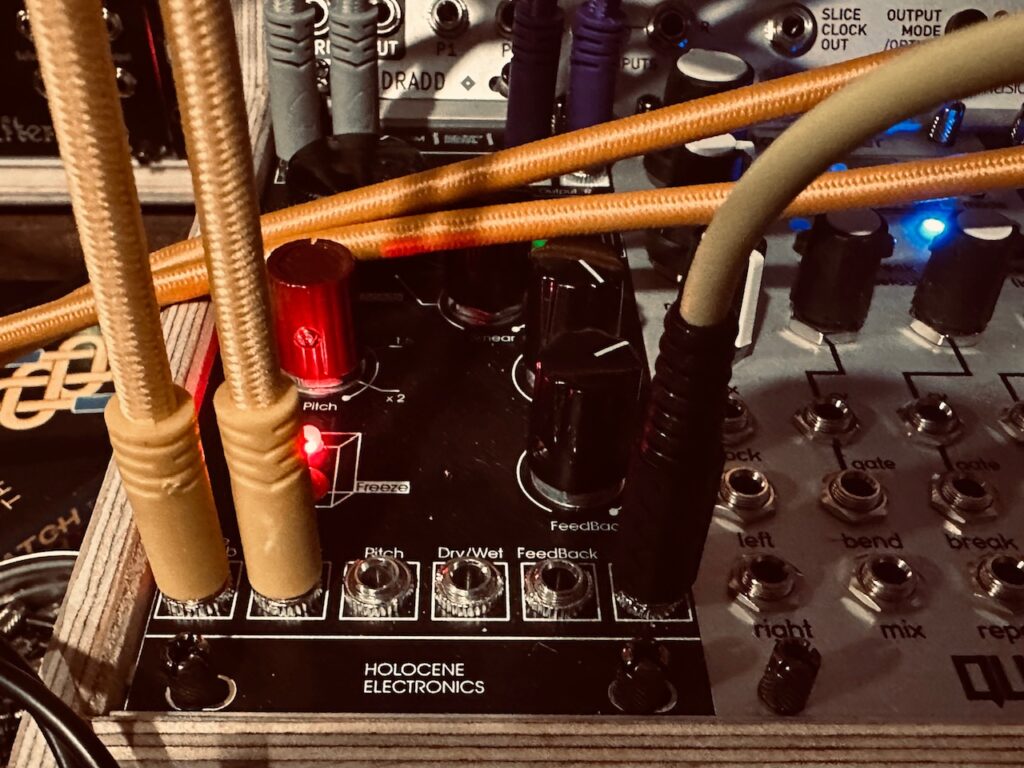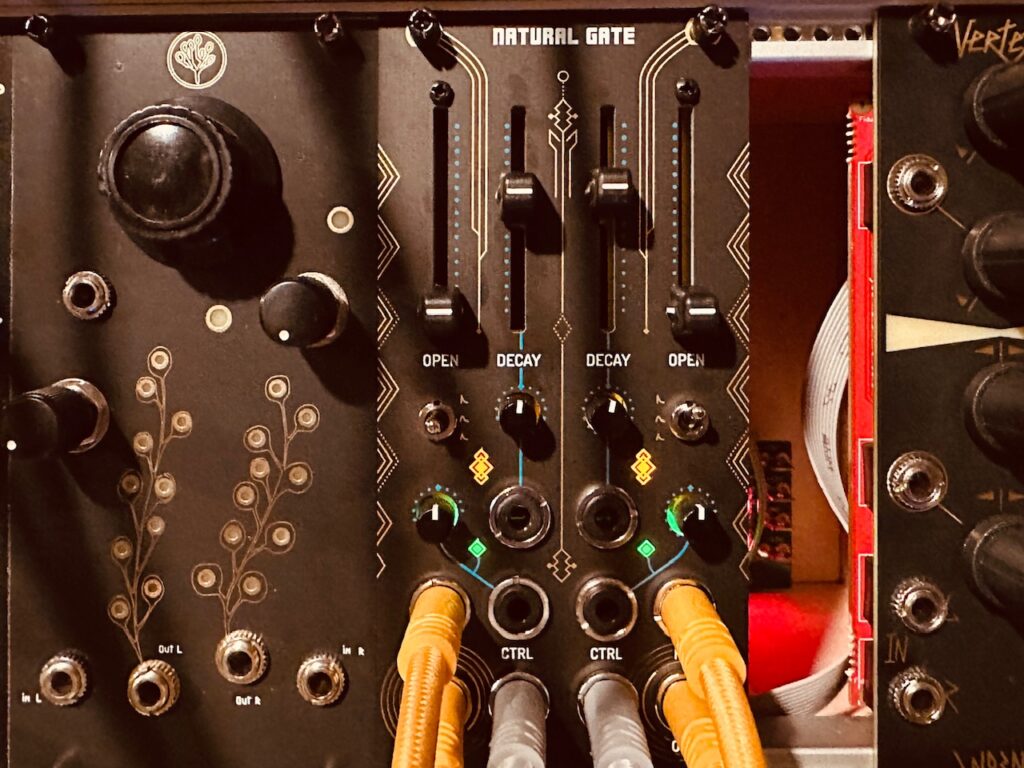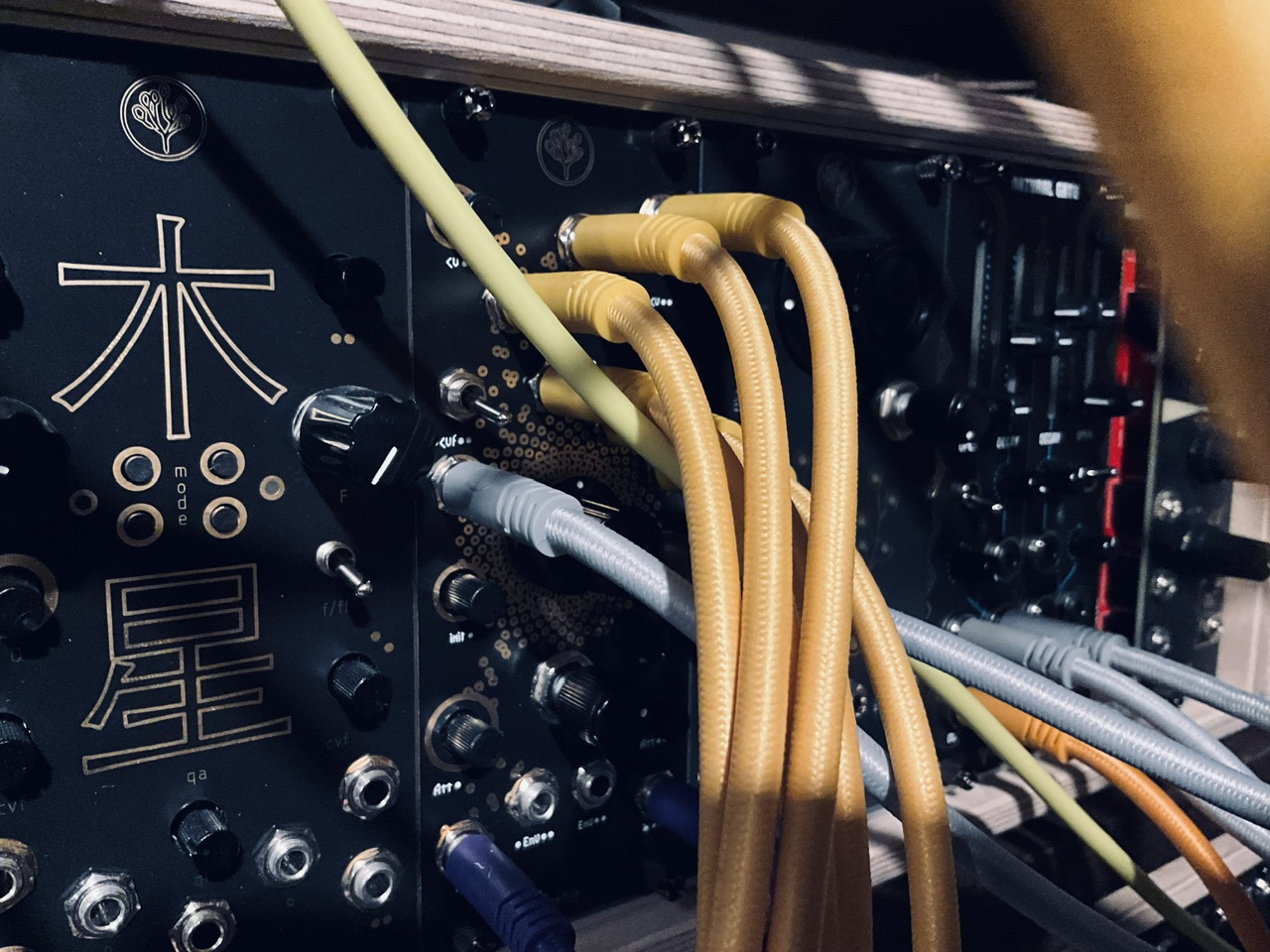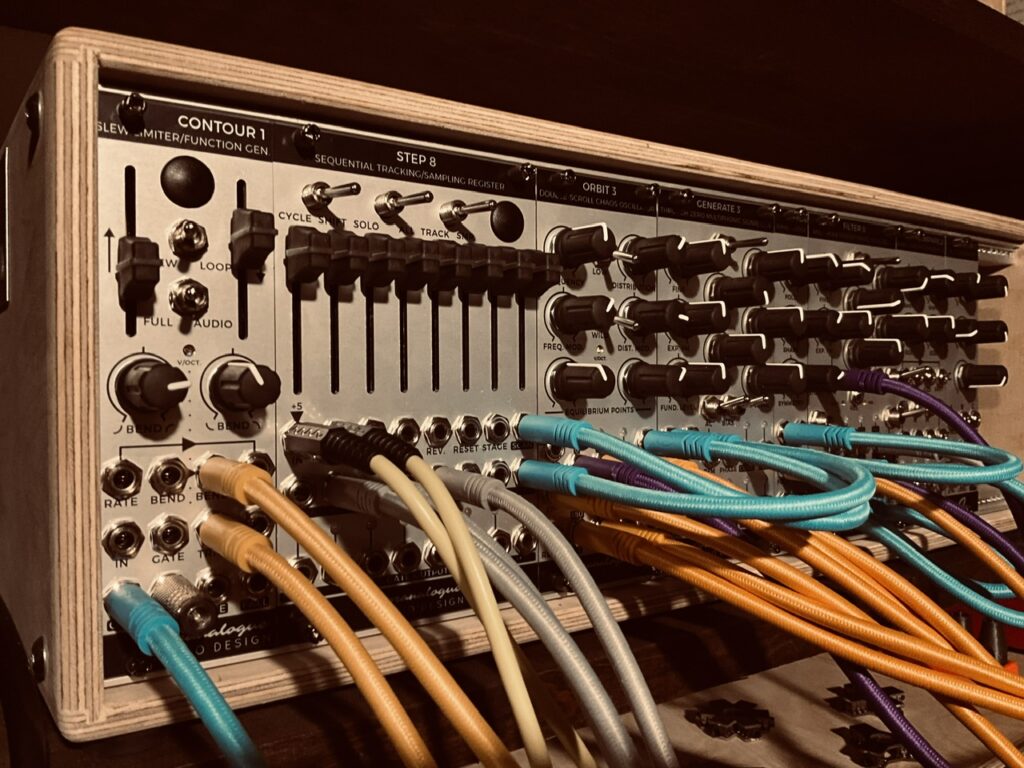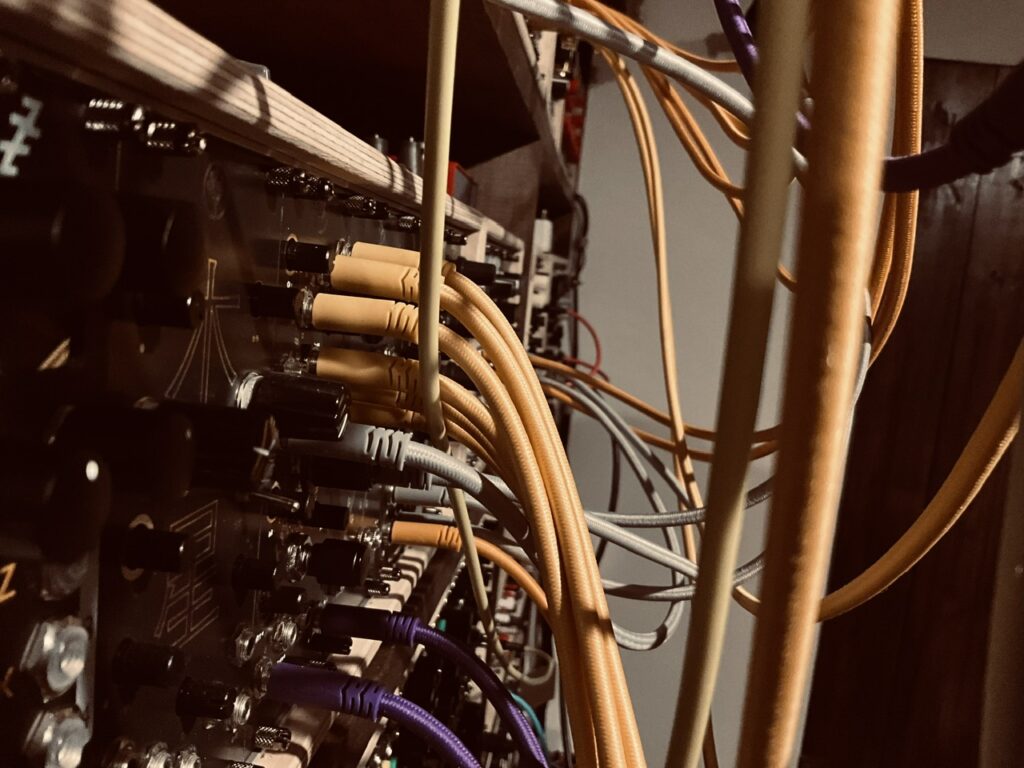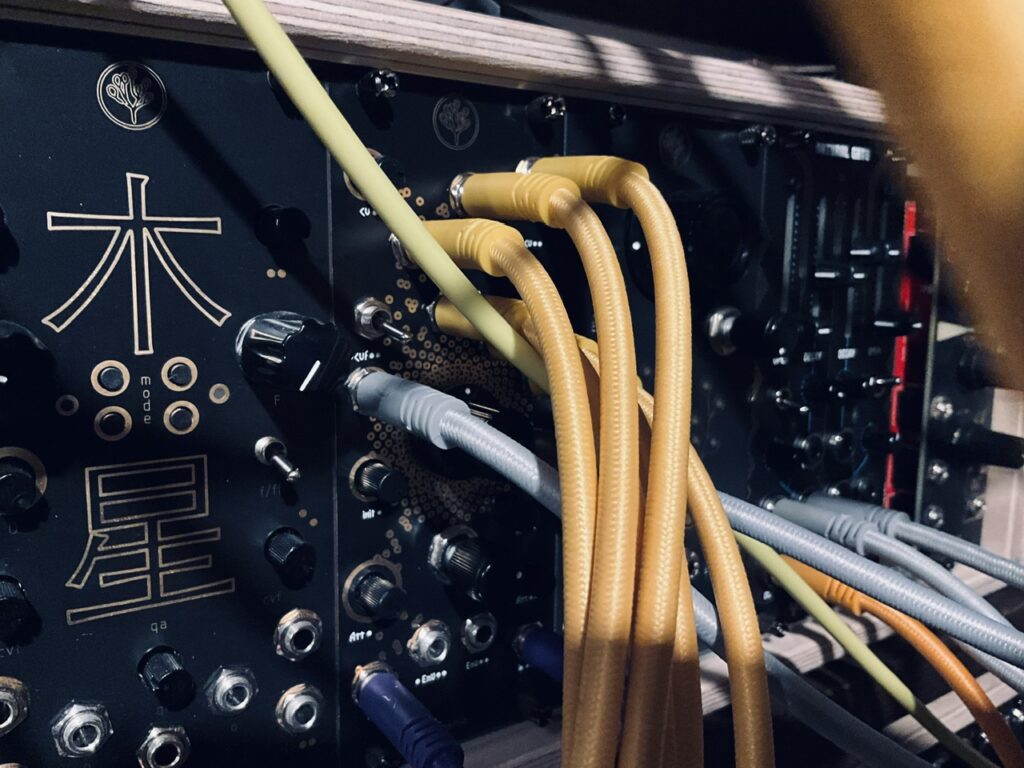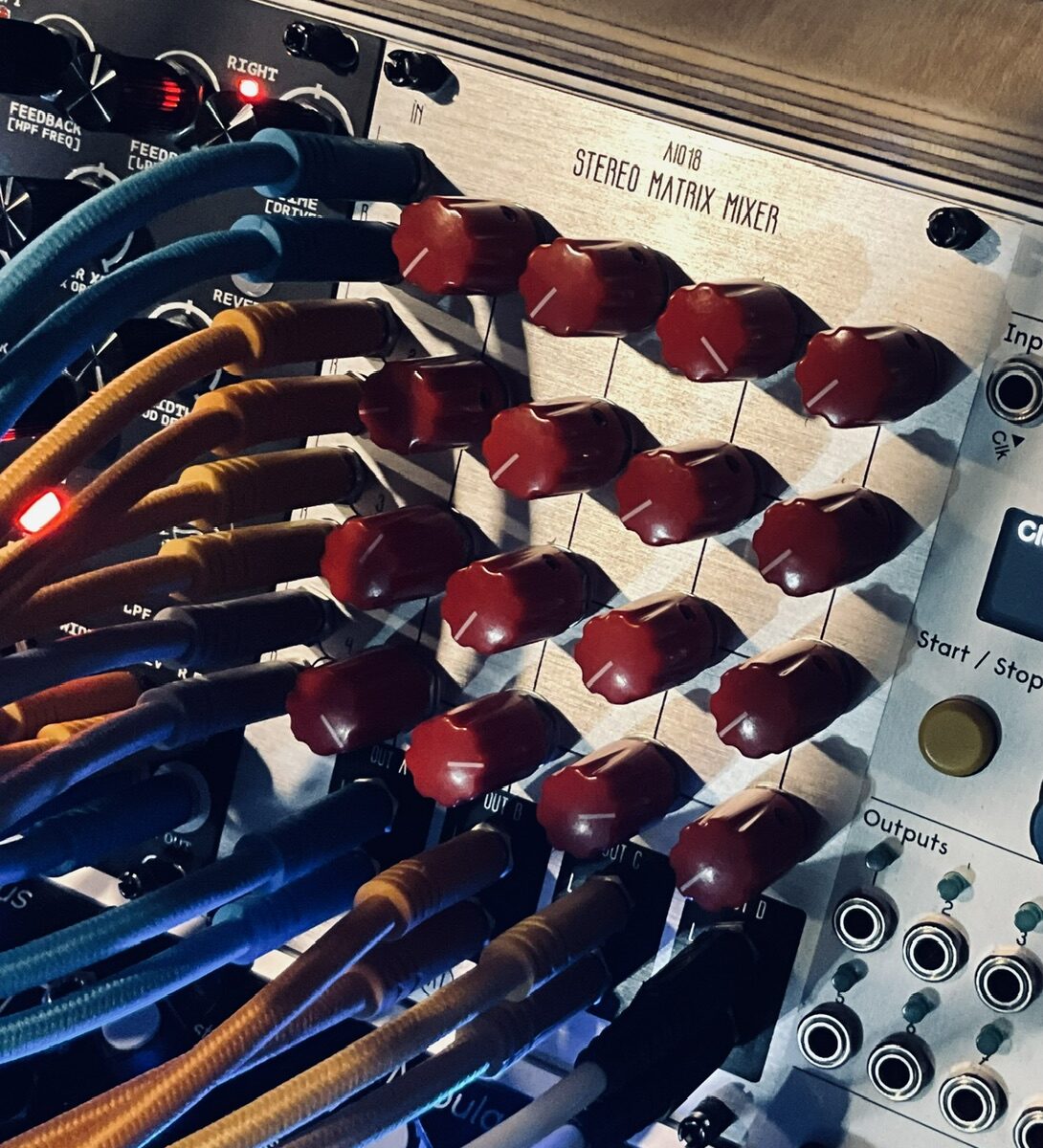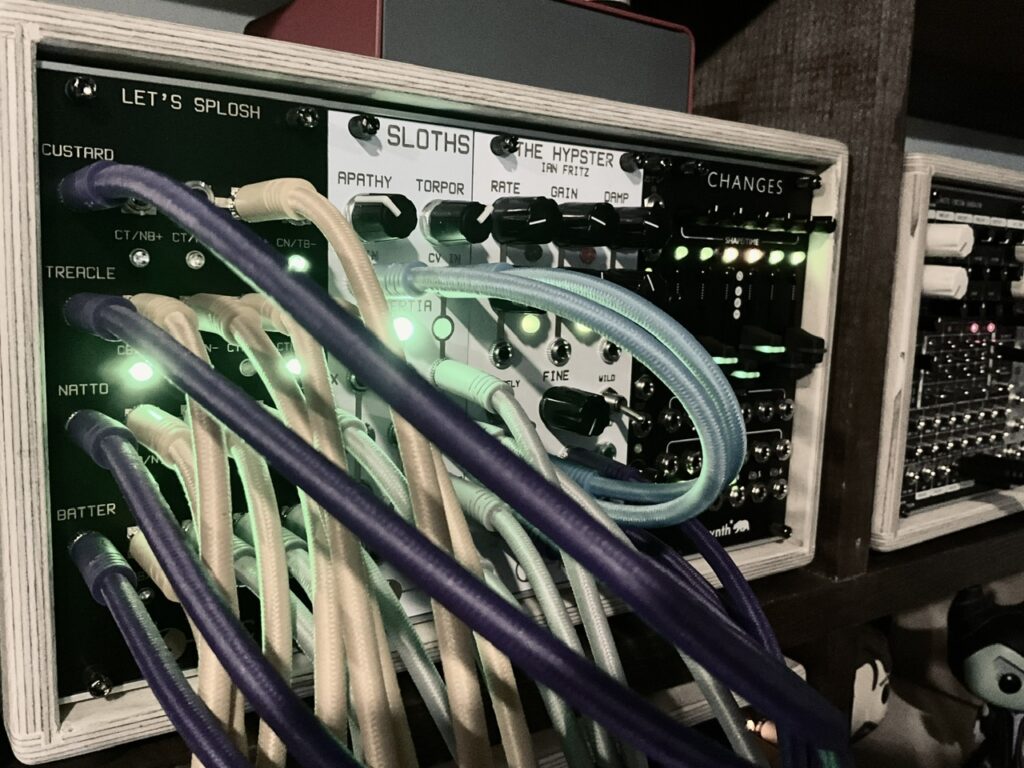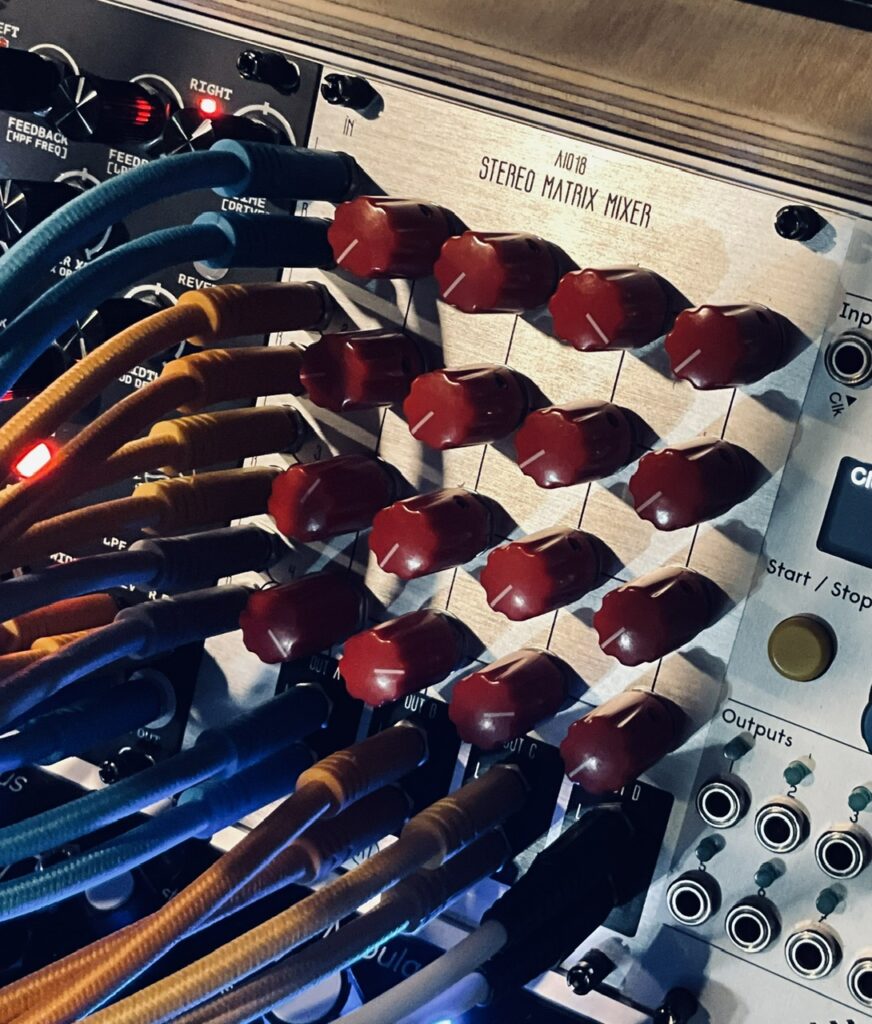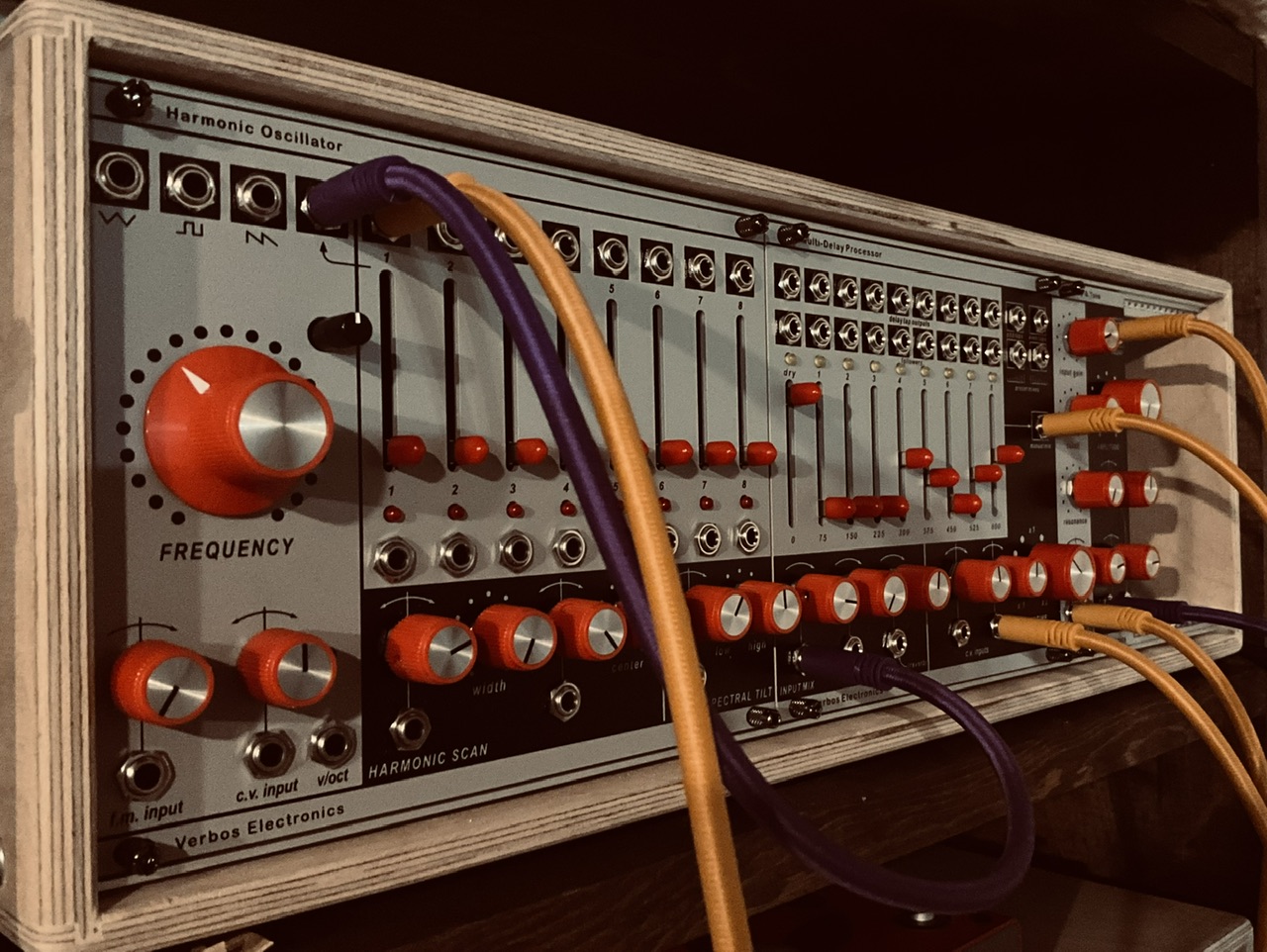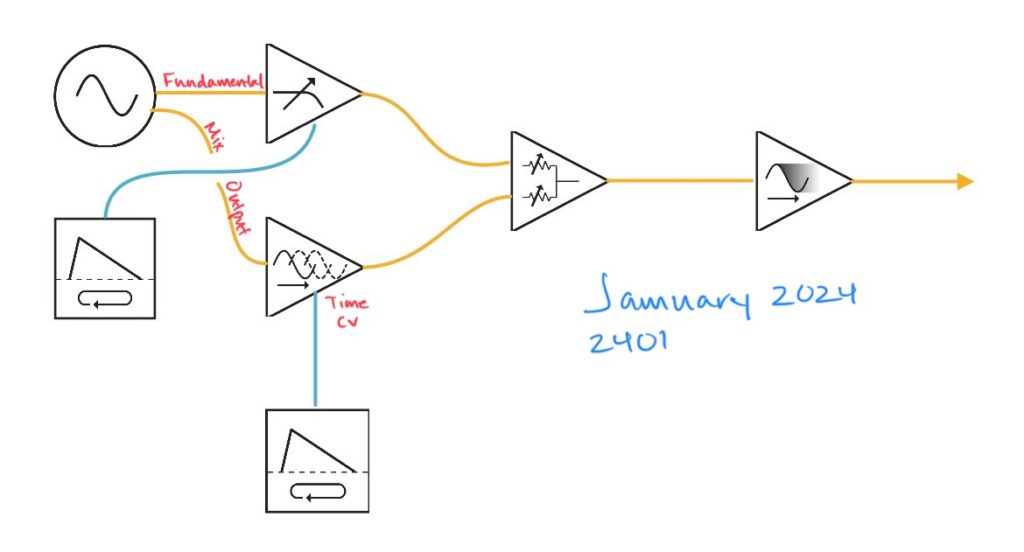I’m a planner. I mean, sometimes I’ll sit down with no idea what I’m patching that day, and allow things to flow organically, but most of my patches entail a great deal of (over)thinking. Patch sketches, signal paths, patch diagrams, all obsessively pondered and carefully considered well before I actually patch it. I find it a good brain exercise to imagine how a patch works before patching it, then seeking the correct algorithm of sound and control based on a set of parameters that I understand. Oftentimes I’ll patch an entire voice, or more, before I even turn the synth on to hear what I’m creating. I’ve already imagined it in my head and thought about it so much that entire patches are sometimes in 3/4 form before I ever hear a note or make an adjustment. Today is one such day. I started thinking about this patch a month or more ago when I first purchased Odessa. I have notes stolen taken from Tom Churchill’s patch breakdown of making chords out of a single sequence and a slew of sample and hold modules, and I was going to do an adaptation of that.
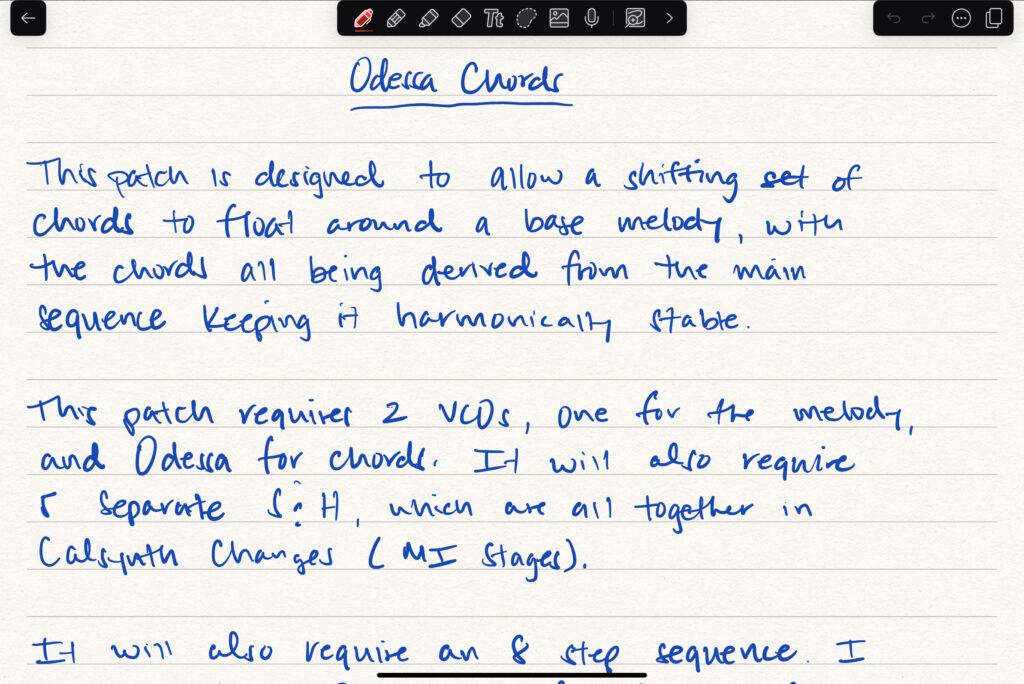
I had planned on a late Jamuary entry for yesterday, but it just wasn’t to be. Life and all that. But one thing I did want to do, in order to actually get started and stop charting and making diagrams, was to patch in as much as I could while I did have a little time.
I’ve taken this approach to patching many times. I like to plan my wiggle and wiggle my plan, and it’s generally been a fairly successful endeavor. Sure, I’d often have to make adjustments or small changes to hone the patch in, but I never expected a perfect patch without ever having listened to a note before it’s largely done. Making changes and adjustments was part of the plan.
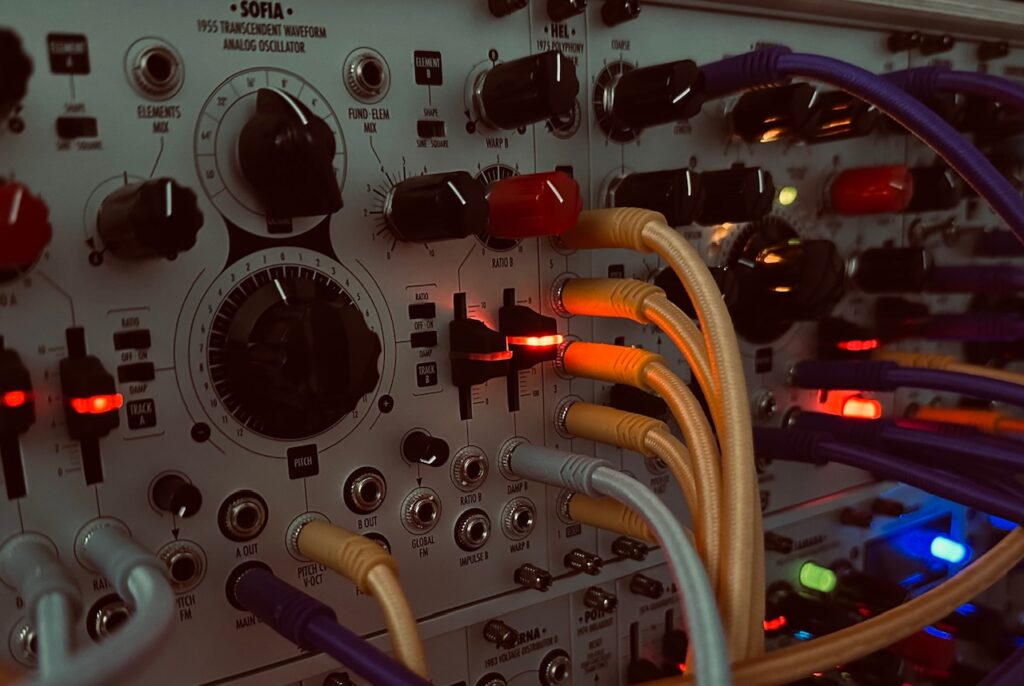
But today’s plan was terrible. Or at least the execution of it was. Not only did I patch in the basic frame of the patch beforehand, pitch and sequencer gates going to the right places, envelopes and audio to VCAs, filters patched in, etc., but I also decided to patch in modulation too. And all before doing the most basic of tasks: tuning my oscillators. And, boy, was this patch job a massive pile of shit. Nothing sounded even close to what I wanted, and I had no idea where to even start to draw it in. I couldn’t even get my oscillators in tune without unpatching more than I was willing to do.
Once everything was plugged it, there was no going back. The patch involved a Shelob sized web of cables spanning back and forth across the synth, and paring back would have been more difficult than just starting over. But I didn’t really want to do that, so I decided to salvage a portion of the patch, and just not record what was bad. So that’s what I did.
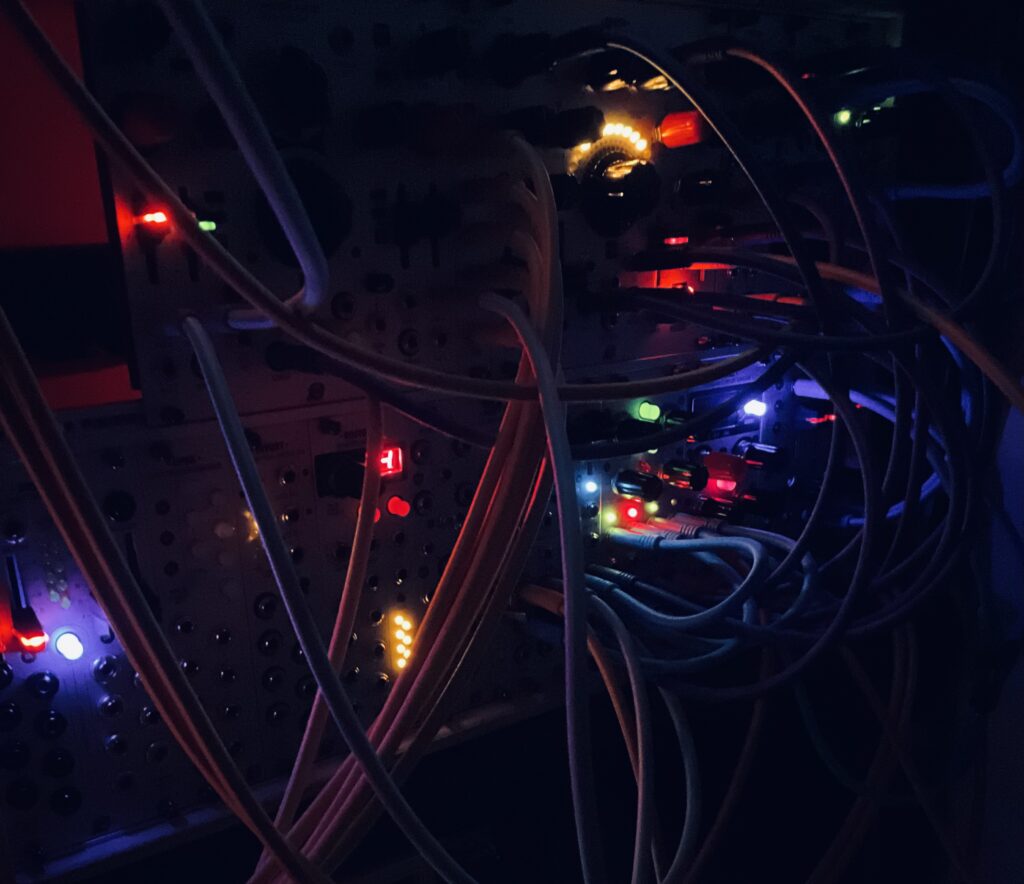
Odessa started out life in this patch as the background. Chords to support a main sequence being played by Sofia. A cloud of ever-changing notes to shimmer about as the sequence skates along. Instead, it turned out to be the only voice. And one that isn’t a never ending blur of rolling chords from a cadre of sample and holds, but all 5 voices stopped on whatever pitch was the last sent to the various v/oct inputs on Hel when I pressed stop on the sequencer, and some rearranged and more focused modulation. A drone of sorts. And not a bad one either.
But instead of just putting it through some reverb and calling this failed patch a day, I decided, with the help of the Non-Linear Memory Machine and my trusty Vongon Ultrasheer, to make it a mostly wet affair. To see if I could make chicken salad out of chicken shit.
I also decided late in the recording process to add in Misosa as a send from my mixer. You know: for some doom. During that process I mistakenly made a feedback loop.. The wet reverb sent to Mimosa, which is then output to the Reverb send. Fortunately everything remained calm enough and didn’t get out of control. Disaster averted.
I’m definitely going to try the original patch again, only I won’t patch it in beforehand. At least I won’t patch in anything beyond the skeleton. I’ll leave modulation to more careful trial and error. I’ll give it a real chance before smothering it in random LFOs and cycling envelopes.
Modules Used:
Oxi One
Xaoc Devices Odessa + Hel
Xaoc Devices Tallin
Xaoc Devices Katowice
Xaoc Devices Zagrzeb
Xaoc Devices Batumi + Poti
Xaoc Devices Zadar + Nin
Xaoc Devices Samara II
AI Synthesis 018 Stereo Matrix Mixer
Bizarre Jezabel Mimosa
Calsynth Twiigs
Knob Farm Ferry
Holocene Electronics Non-Linear Memory Machine
Vongon Ultrasheer
Performed and recorded in 1 take in AUM via the Expert Sleepers ES-9.


